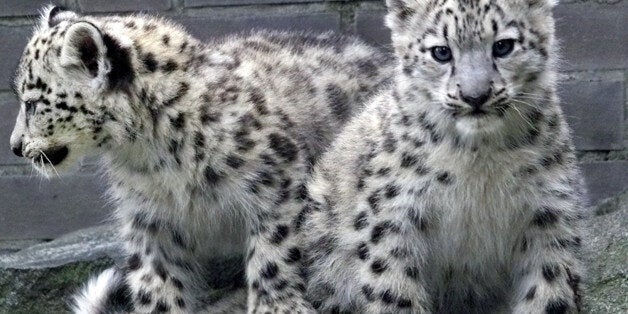
Did you know that Sunday 23rd October is International Snow Leopard Day? And what better way to celebrate than to showcase the ways that WWF is helping people live in harmony with this grey ghost of the mountains.
Snow Leopards are illusive: even some researchers that have been studying this specie for years have never seen one up close. But that doesn't mean that these cats don't share the same space as people. In fact, in many places, snow leopards are silent neighbours to communities living in remote mountainous regions of Asia.
Whilst snow leopards do tend to avoid direct contact with people, they will sometimes take their livestock. However, people's lives in the Himalayas are centred around their livestock - they use them for meat, milk and rugs. They also use their dung as fuel for their fires which they cook from and of course, get warmth from. So having a predator take away their dinner and central heating system can anger the locals. In response, some people even kill snow leopards as a way to prevent future damage.
To try to limit this retaliation, we're working hard to improve coexistence between people and snow leopards. Here are five ways that WWF are reducing this human-wildlife conflict:
1.Insurance schemes
Locals are now paying into a community-managed fund, a little bit like a car insurance scheme that would pay out if you got into an accident. If a snow leopard kills an insured livestock, the owner gets support from this communal pot of money. This financial aid is helping the community to tolerate snow leopards. In fact, the scheme is so popular that it's spreading to new areas - protecting snow leopards in even more places.
2.Community conservation work
Local people living in a snow leopard country are equipped with amazing skills and knowledge of their natural surroundings. By working closely with communities, we're able to learn from their experiences and knowledge. We're training them to become citizen scientists so they can help collect important information on the wild animals living in the area. This allows people to feel more engaged with snow leopard conservation so they become more positive about living alongside this species.
3.Collaring snow leopards
Unlike the collars that your domestic moggy wears, the collars we're putting on snow leopards are much more hi-tech. They're equipped with GPS technology, which allows us to know how far snow leopards move in their landscape, what sorts of habitat they prefer and whether they hang out close to humans. This information can help us plan for large-scale conservation projects.
4.Better protection of livestock
We're helping people to improve their livestock pens so that snow leopards can't get in. We're also providing advice on using guarding dogs to protect their livestock and having people watch over their herds whilst their livestock are out grazing
5.Improving the habitat
Snow leopards don't eat from dinner plates, but if they did, they'd be mostly filled with the meat of ibex and blue sheep. These wild herbivores eat grass, but so do the local community's livestock. If not enough grass is available for both livestock and wild animals, the numbers of wild herbivores might decline, meaning that hungry snow leopards could target livestock instead. We're collaborating with local communities to reduce the overgrazing of grass by livestock by supporting rotational grazing and creating better access to pastures outside of protected areas. This ensures there's enough grass to share between livestock and wild animals. Communities are beginning to understand that having a healthy prey population means that their livestock are less likely to be killed by predators, so a good prey population is a positive sign.
Through these five steps, people's attitudes are changing towards snow leopards - they are now starting to feel happier about living with snow leopards. And what's more, retaliatory killing is declining, which gives hope that this ghost of the mountains can continue to live out its secret life alongside humans.
You can support our work on human-wildlife conflict mitigation and snow leopard conservation by adopting a snow leopard.